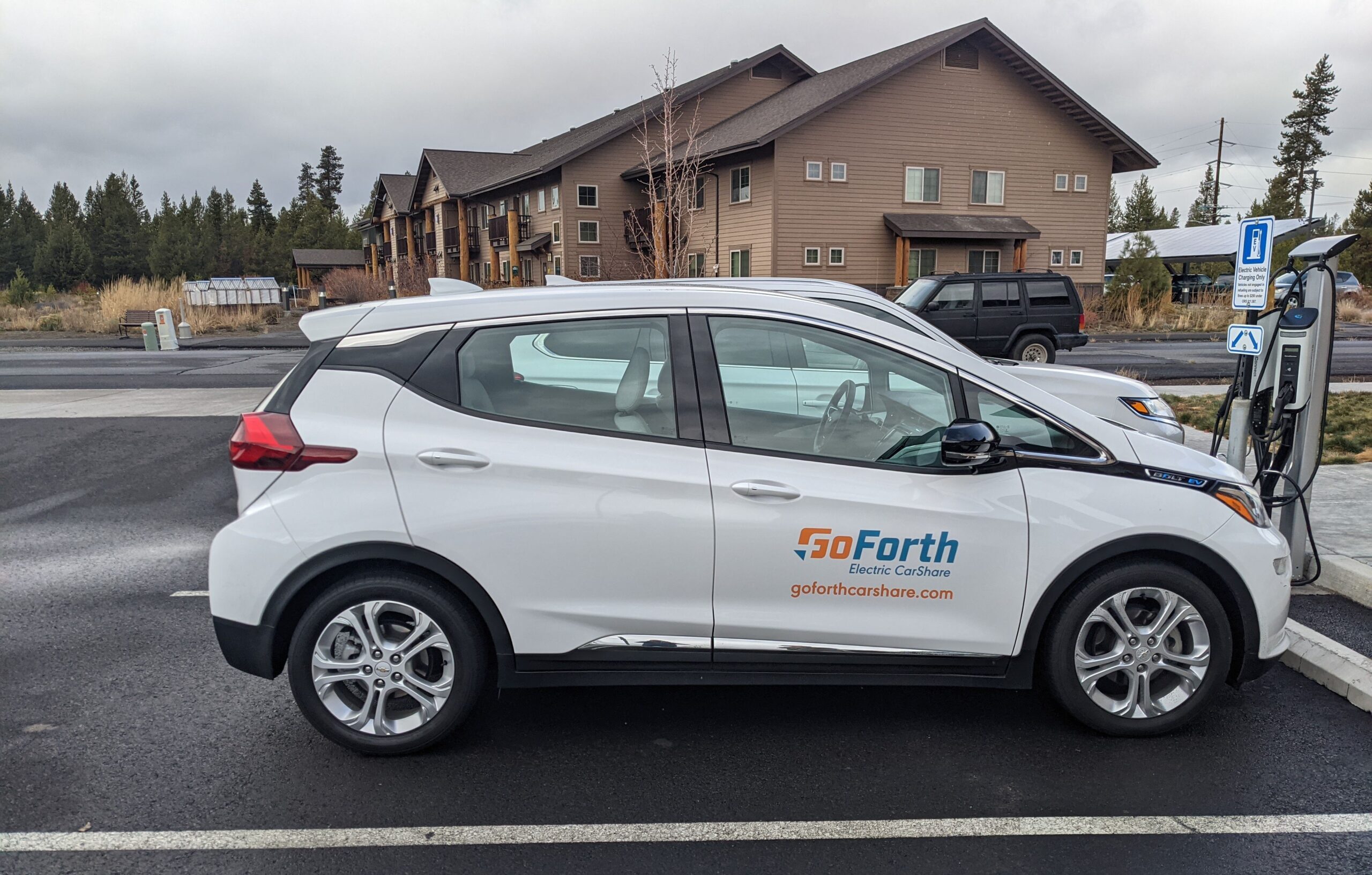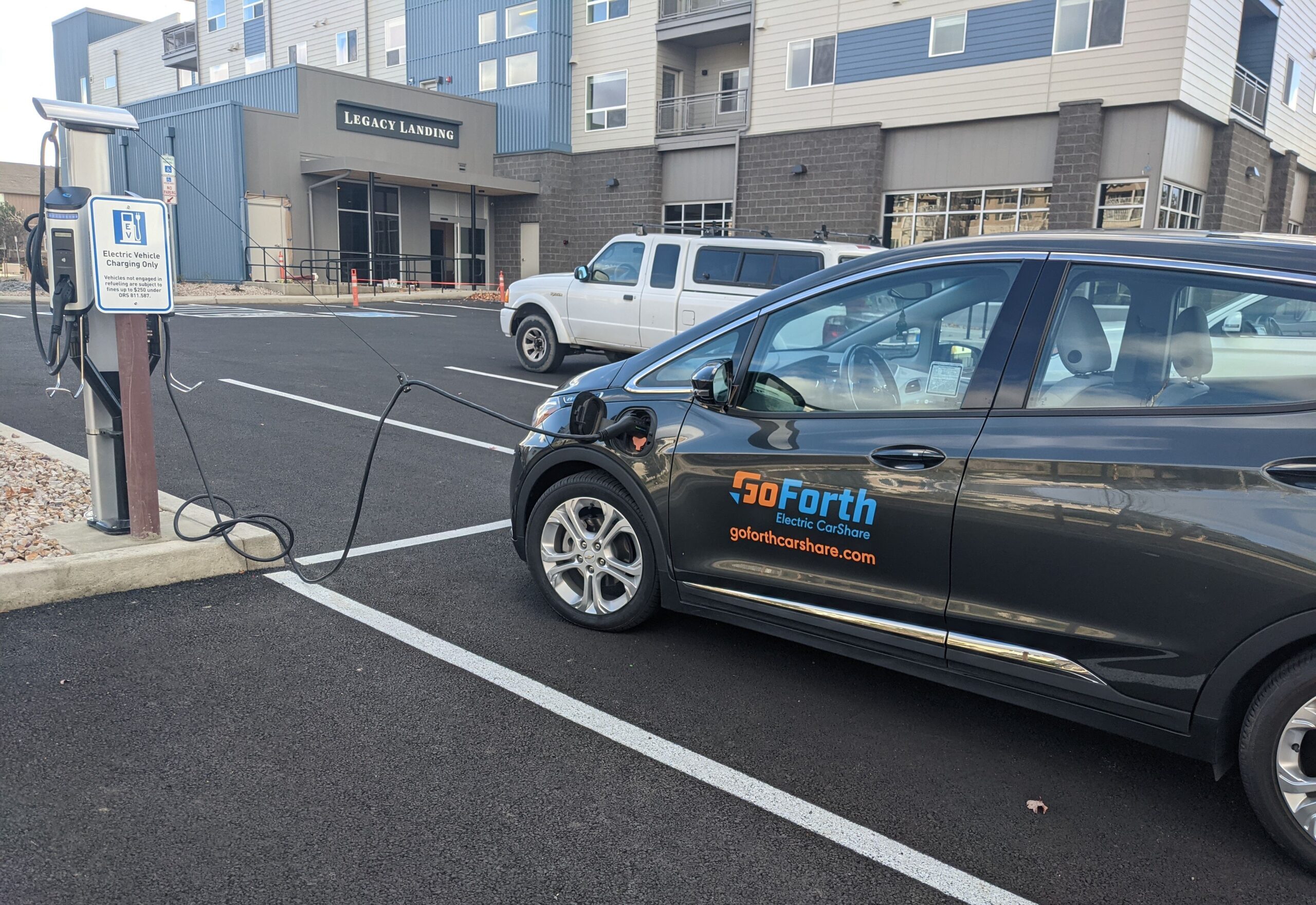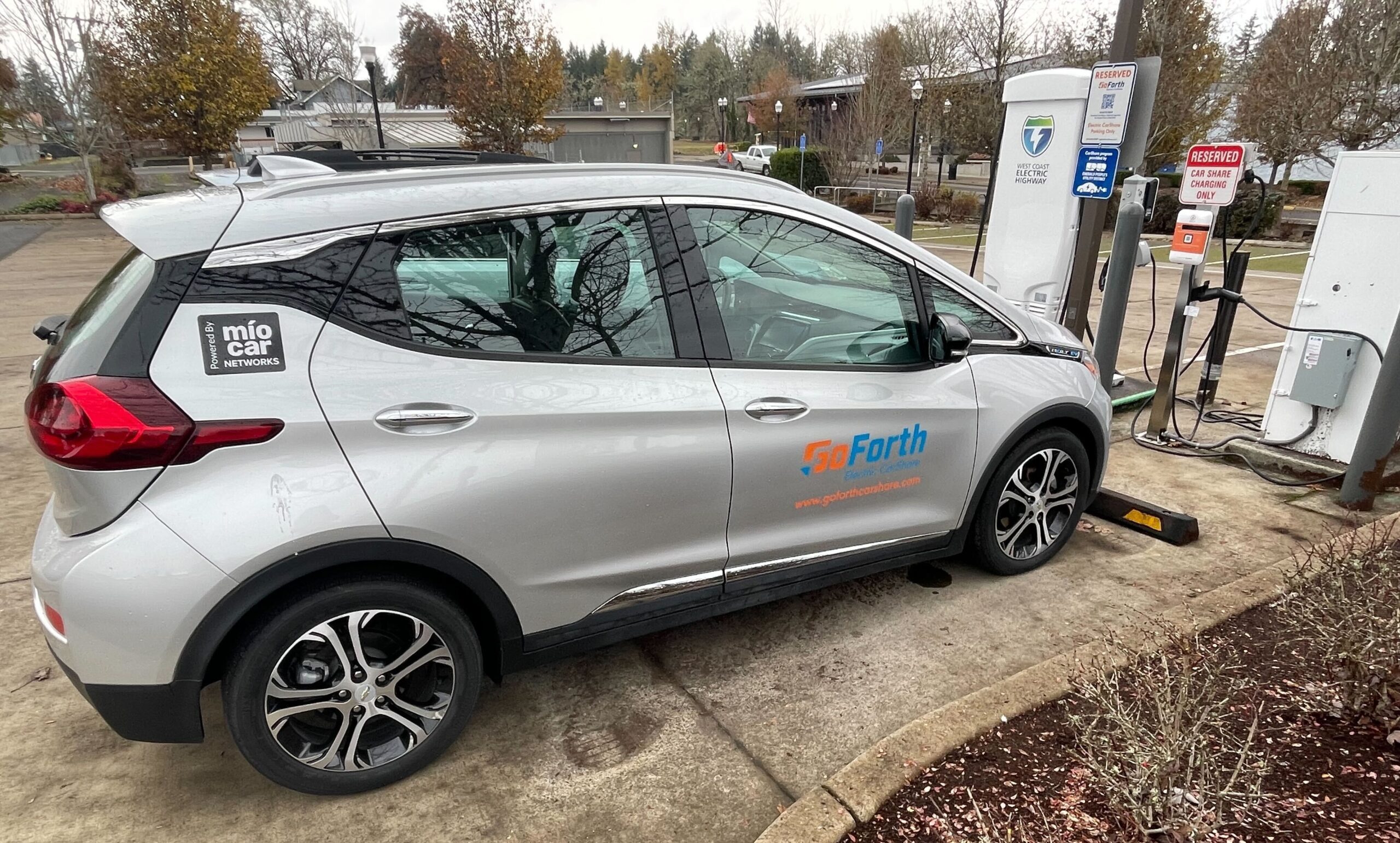
Buying a new vehicle can be expensive, but carsharing provides access to vehicles without the responsibility of ownership. Carsharing offers hourly or daily use of a publicly-available vehicle to people who sign up for the service. It is a significant tool to increase access to affordable transportation and alleviate the number of vehicles driving and parking in our communities.
In 2020, the U.S. Bureau of Labor Statistics estimated that the average American household spent over $9,000 annually on transportation expenses. Meanwhile, privately owned vehicles spend 95 percent of their life in a parking spot, unused. On average, a single carshare vehicle takes 15 privately-owned vehicles off the road, reduces congestion, and benefits the environment.
When an individual chooses carshare instead of vehicle ownership, they avoid the costs and hassle of insurance premiums, monthly payments, maintenance, fuel costs, registration, repairs, parking and more.
Many people have tried carsharing programs like Zipcar, Flexcar, Free2move, Share Now, and ReachNow. While these companies provide helpful services, traditionally, their vehicles haven’t been electric and their focus has been on affluent and urban settings. But, given the benefits these services can provide if implemented in underserved locations, such as reduced transportation costs and cleaner air, this is a missed opportunity.
Because much of the adoption of and investment in electric vehicles (EVs) and carsharing has occurred in urban and affluent areas, rural and low-income communities have a lower awareness of EVs and aren’t receiving the benefits of better air quality and the convenient availability of EV charging infrastructure. But carsharing offers an excellent opportunity to change that.
Many underserved and vulnerable communities lack access to safe, reliable, economical, and clean transportation and are more likely to face health burdens, such as asthma from poor air quality, and longer commutes because of their limited access to transportation options. For individuals in these communities, carshare can lead to new economic opportunities and bolster existing options.
The ability to access affordable transportation directly impacts an individual’s access to education, professional development opportunities, child care, and healthy food choices. Urban settings often feature a variety of transportation options that can complement or serve as an alternative to personal car ownership. Examples include public transportation, shared mobility services, as well as micromobility such as bikes and scooters. Transportation options are often more limited in rural communities due to lower population density and greater travel distances between destinations.
Forth, a non-profit advancing clean and equitable transportation, has developed and tested a variety of EV carsharing programs to identify and understand best practices and challenges in launching them. It is currently launching EV carsharing projects in Oregon, Washington State, Missouri, Idaho, Nevada, and New Mexico. In developing and managing these programs, Forth has developed nine recommendations for a successful program.
1. Get Insured
Begin the search for insurance to cover the vehicles in a carshare fleet early — it can be time-consuming and difficult. Insure the drivers and the vehicles. It’s an option to require members to have their own insurance coverage. (This is cheaper for the organization, but the cost can create another barrier for users.) Work with an insurance broker to find underwriters. Be prepared to provide things such as user terms and conditions, operations protocols, metric and data tracking process and projections, and organizational financials, among others. Expect premiums to cost between $2,500 and $3,500 per vehicle annually. Many plans are mileage-based and/or have high deductibles that can exceed $20,000 per vehicle.
2. Appropriate Pricing
Appropriate pricing depends on multiple variables, including cost of living, socio-economic demographics, available subsidies, and projected revenue. It is common for services to have a standard rate and a discounted rate for income-qualifying users. Organizations can conduct surveys to establish what residents can afford, and how this compares to other local transportation options. Setting the price too low can lead to individuals essentially reserving a vehicle indefinitely, limiting its use to other members. If the prices are too high, the service can go unused.
3. Address Technology Barriers
EVs and charging are new technologies to many. Potential users may lack smartphones or the technological literacy to use a carshare app. The mobile apps associated with the program may not be available in the language that a member speaks or reads.
Select a user-friendly app or platform that meets the specific needs of the target audience. Host hands-on learning sessions to help carshare users understand the vehicle’s apps and charging.
4. Payments and Privacy
Some users may lack access to traditional banking and may not have a debit or credit card for payment. Others may be uncomfortable sharing personal information via an app. Accept alternative payment methods like prepaid debit cards and cash. Some platforms allow the use of radio frequency identification (RFID) cards to members as an alternative to mobile apps, and also function when internet/cellular coverage may be limited.
5. Fleet Placement and Management
Even though EVs require much less maintenance and service than gasoline-powered vehicles, they still need periodic attention. The closer together the vehicles are located to one another, the less travel to manage them. If a vehicle gets taken out of service and there are other vehicles nearby, this doesn’t eliminate the service for members in the area. Dead 12-volt batteries, low tire pressure, and wiper replacement are relatively simple but common issues that require in-person support. Additionally, the level and cadence of cleaning needs will depend on level of utilization. One cleaning per week is a good starting point.
6. Member Services and Support:
Provide orientations (either in person or with video) for new members. Be prepared to troubleshoot issues and be available to answer questions on booking and billing via calls and email. Offer remote locking/unlocking and roadside assistance with multilingual support consideration.
7. Working With Host Sites — Location matters
Host sites must be willing to allow charging infrastructure and the reservation of parking spots for exclusive use by a carshare vehicle. Key considerations for siting include housing proximity and density, complimentary transportation options (such as public transit or active transportation), car ownership, income, affordability, and more.
8. Charging Infrastructure
Establish who owns and maintains the charging infrastructure. Ongoing communication between charger manager and carshare operator is needed. Leveraging a site with existing infrastructure is less expensive, but limits the carshare operator’s access to station management. This can create challenges if maintenance, repair, or general troubleshooting is needed. Further, it is recommended to limit public access of the charger so it is exclusively available for the carshare service. To do this, Forth utilizes in-vehicle RFID cards which users can use to activate a charging session.
9. Promotion
Hold in-person events to familiarize users with EVs. Create compelling marketing campaigns to reach target audiences. Partner with community organizations to promote the program. Partnering with organizations that can use the cars for business purposes can be very helpful. Branded vehicle wraps and signage are great ways to promote the service. Promotional discounts for referrals is a great way to spread the word.
Carsharing can make transportation cleaner and more equitable. As a manner of increasing transportation options for populations for whom owning a vehicle is either inconvenient or unfeasible, carsharing offers an affordable solution that also serves to include access for populations who have not been able to participate in the switch to electric transportation. Carsharing not only provides vehicles, it provides exposure to new and important technology, breaking down barriers to modern transportation. It can also serve as an important new business model that benefits populations and demographics that have been traditionally underserved.
Courtesy of Connor Herman, Forth.
I don’t like paywalls. You don’t like paywalls. Who likes paywalls? Here at CleanTechnica, we implemented a limited paywall for a while, but it always felt wrong — and it was always tough to decide what we should put behind there. In theory, your most exclusive and best content goes behind a paywall. But then fewer people read it! We just don’t like paywalls, and so we’ve decided to ditch ours. Unfortunately, the media business is still a tough, cut-throat business with tiny margins. It’s a never-ending Olympic challenge to stay above water or even perhaps — gasp — grow. So …







